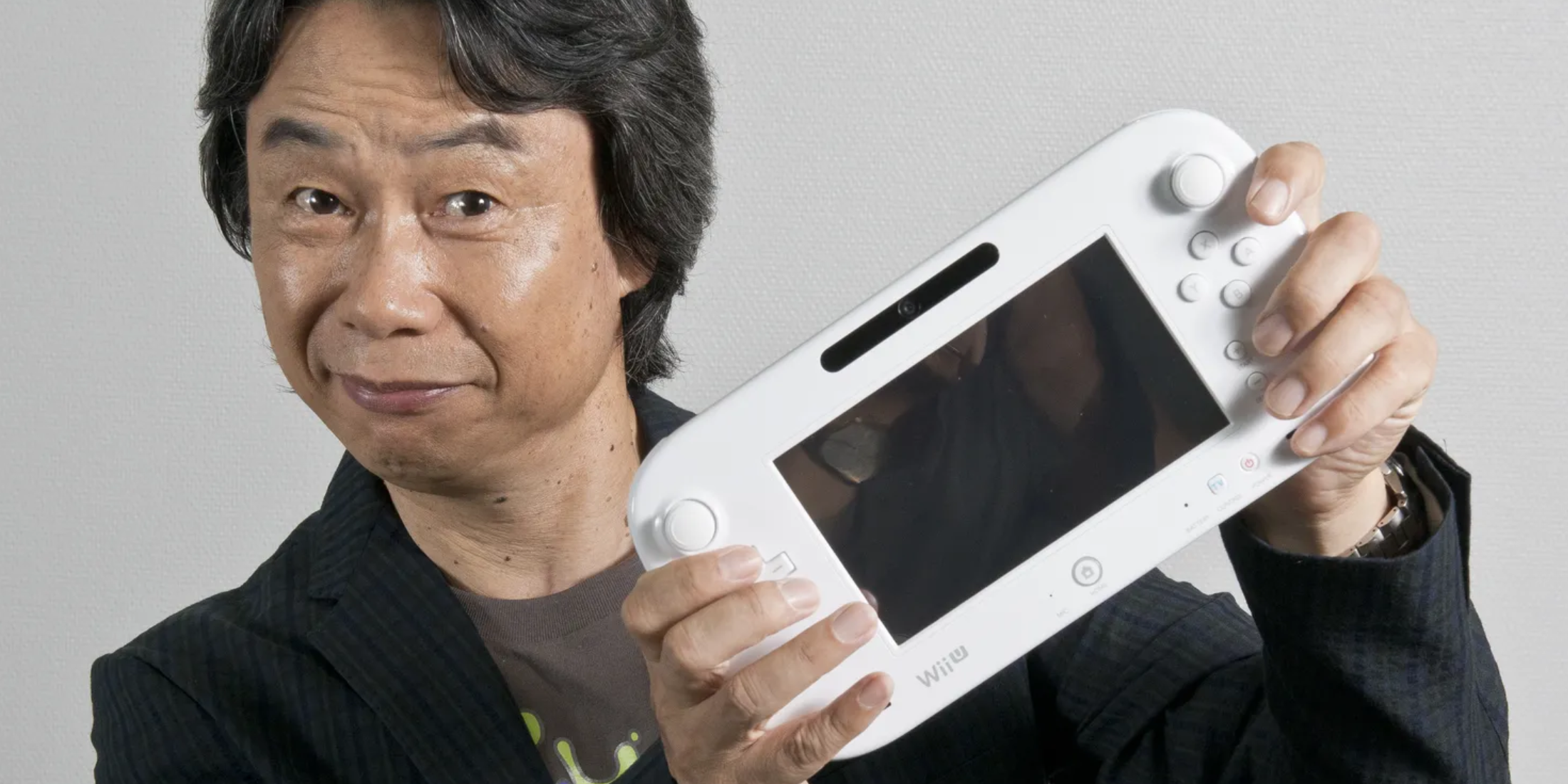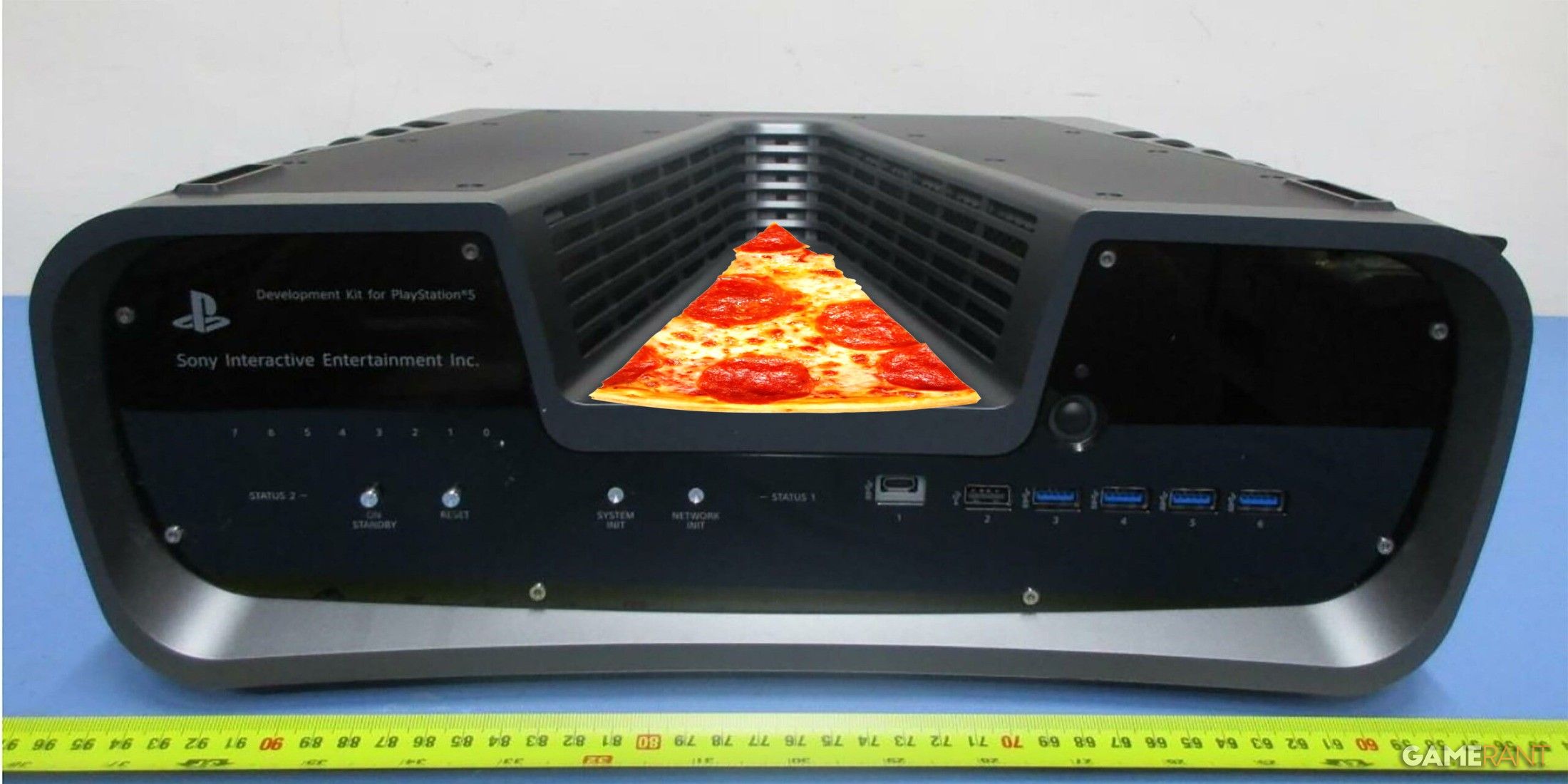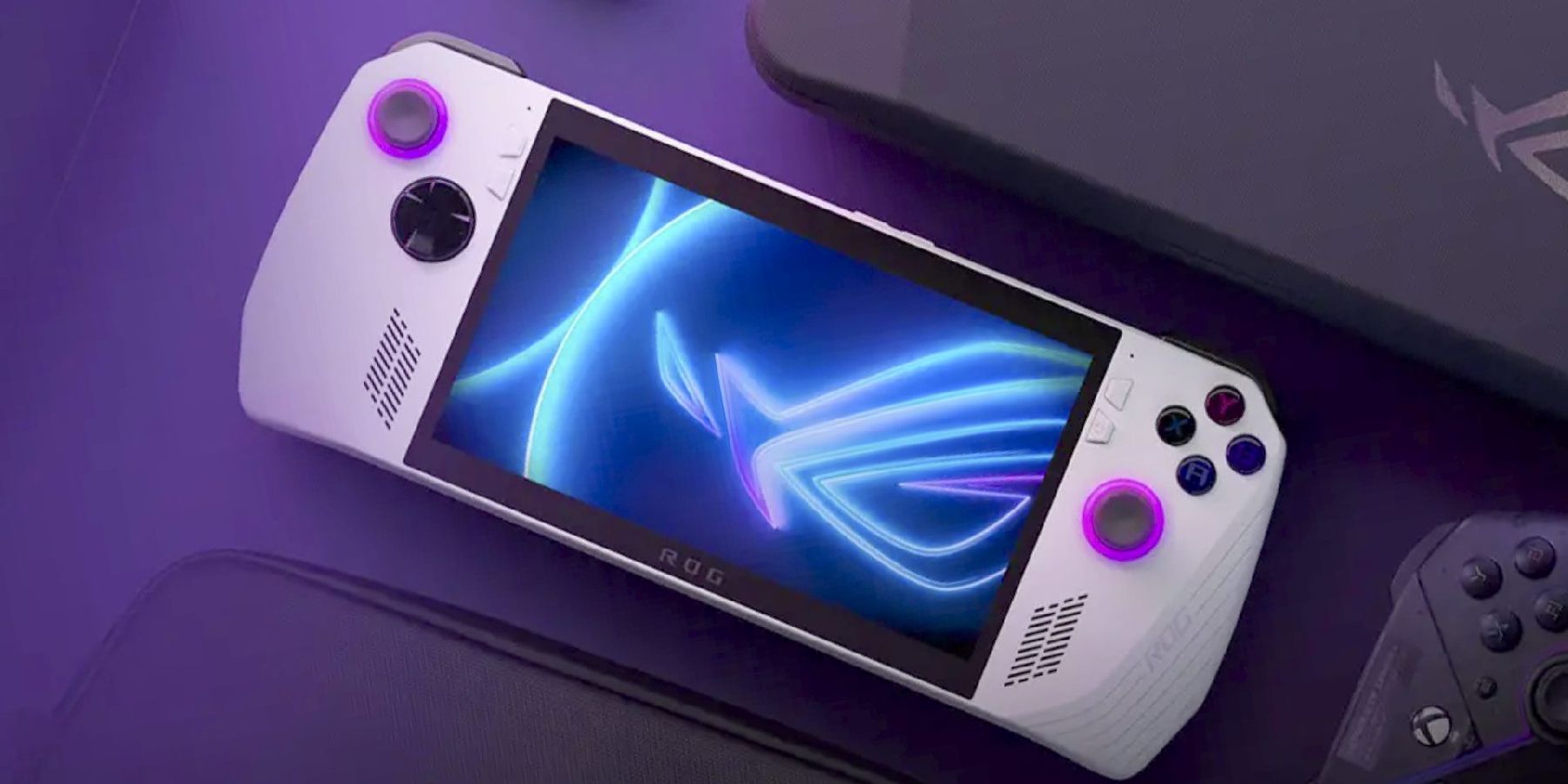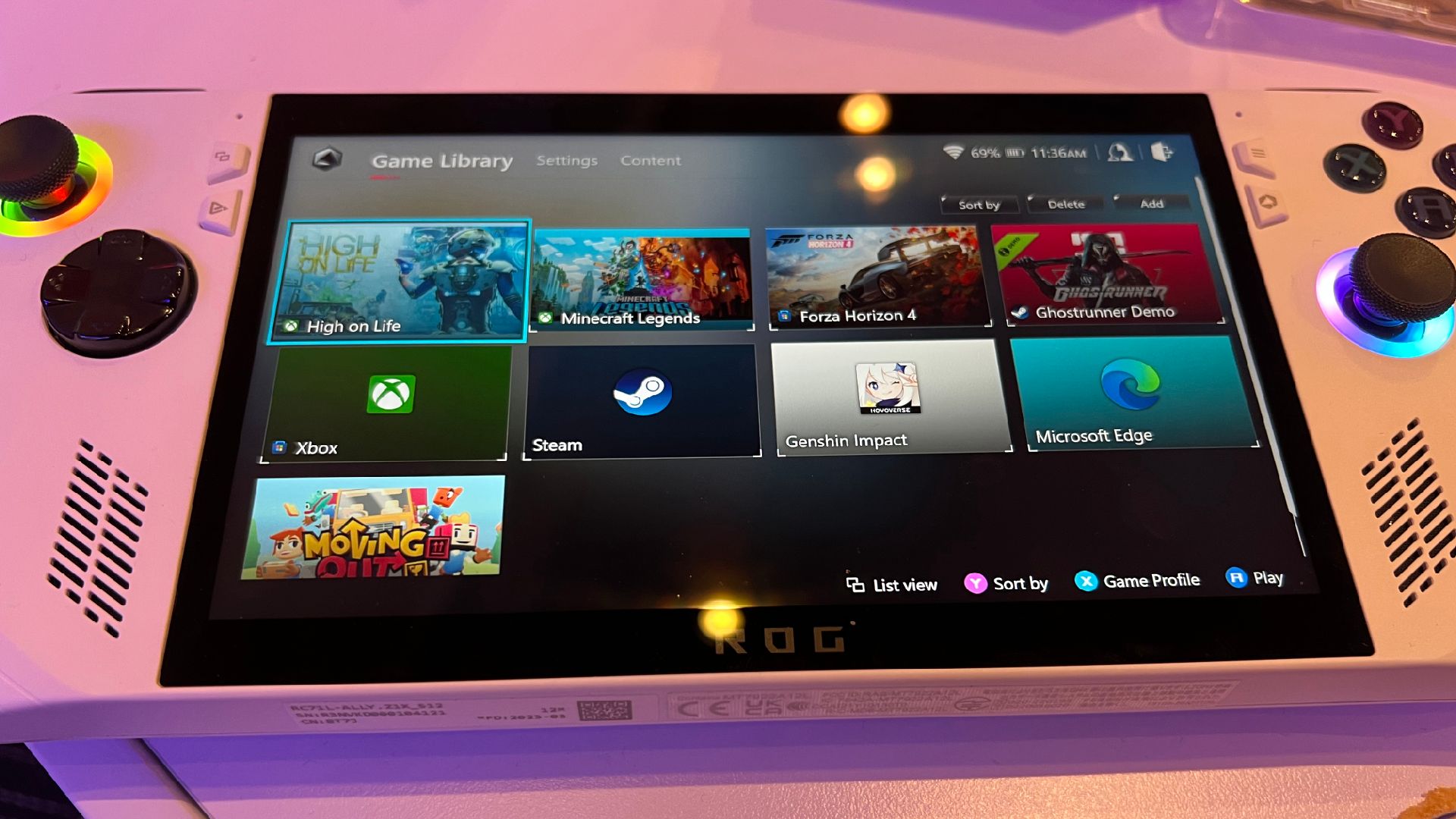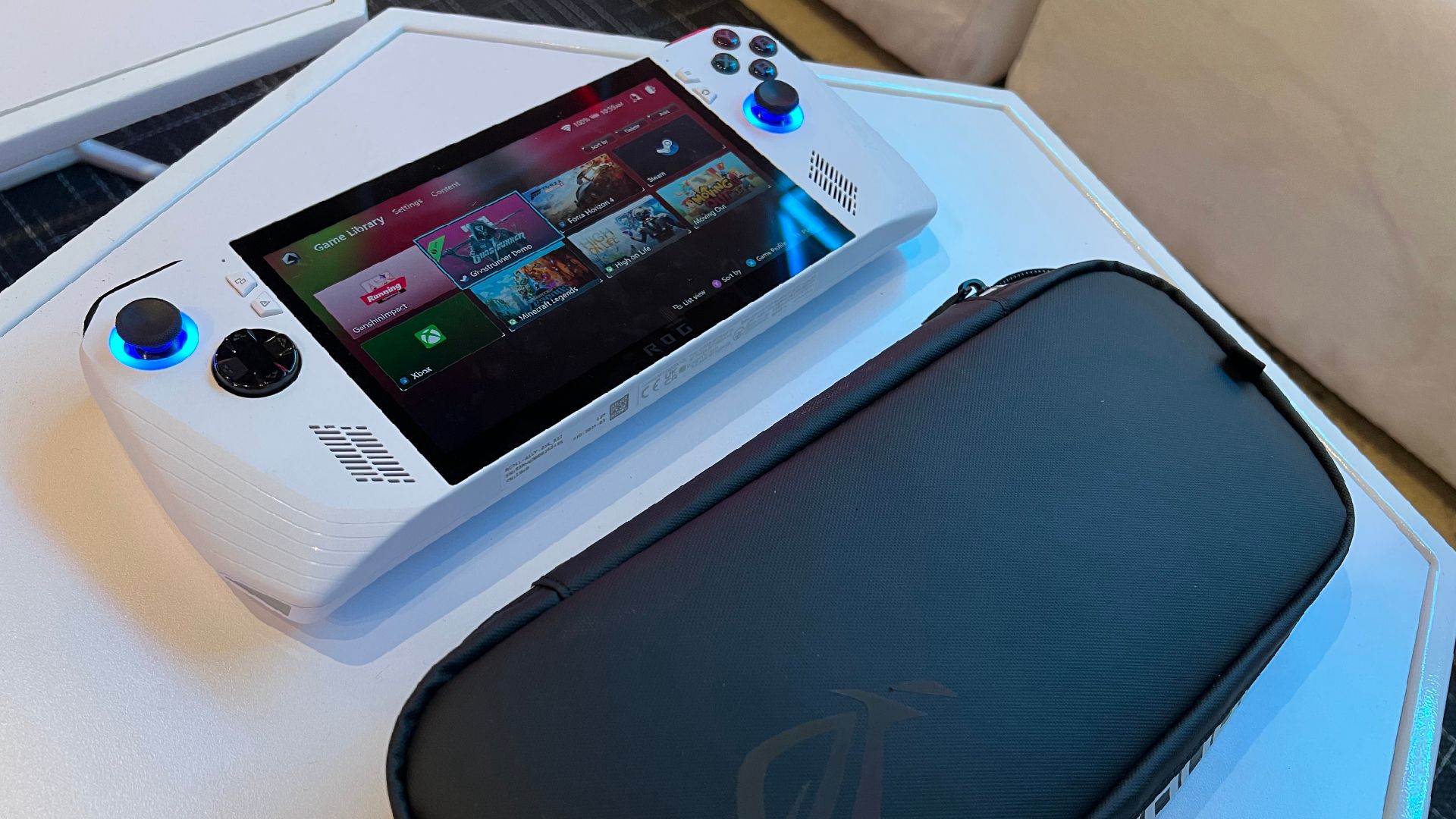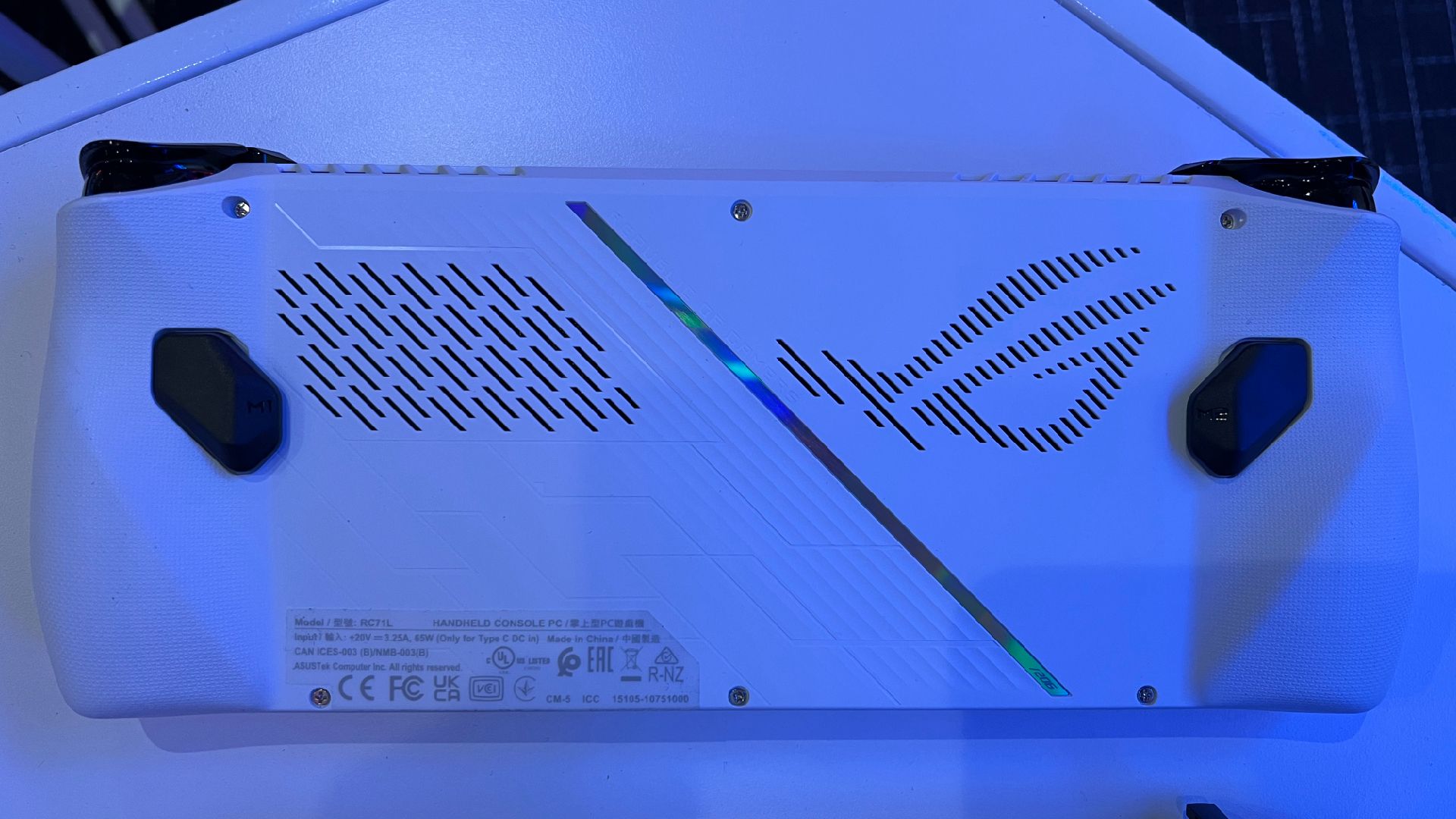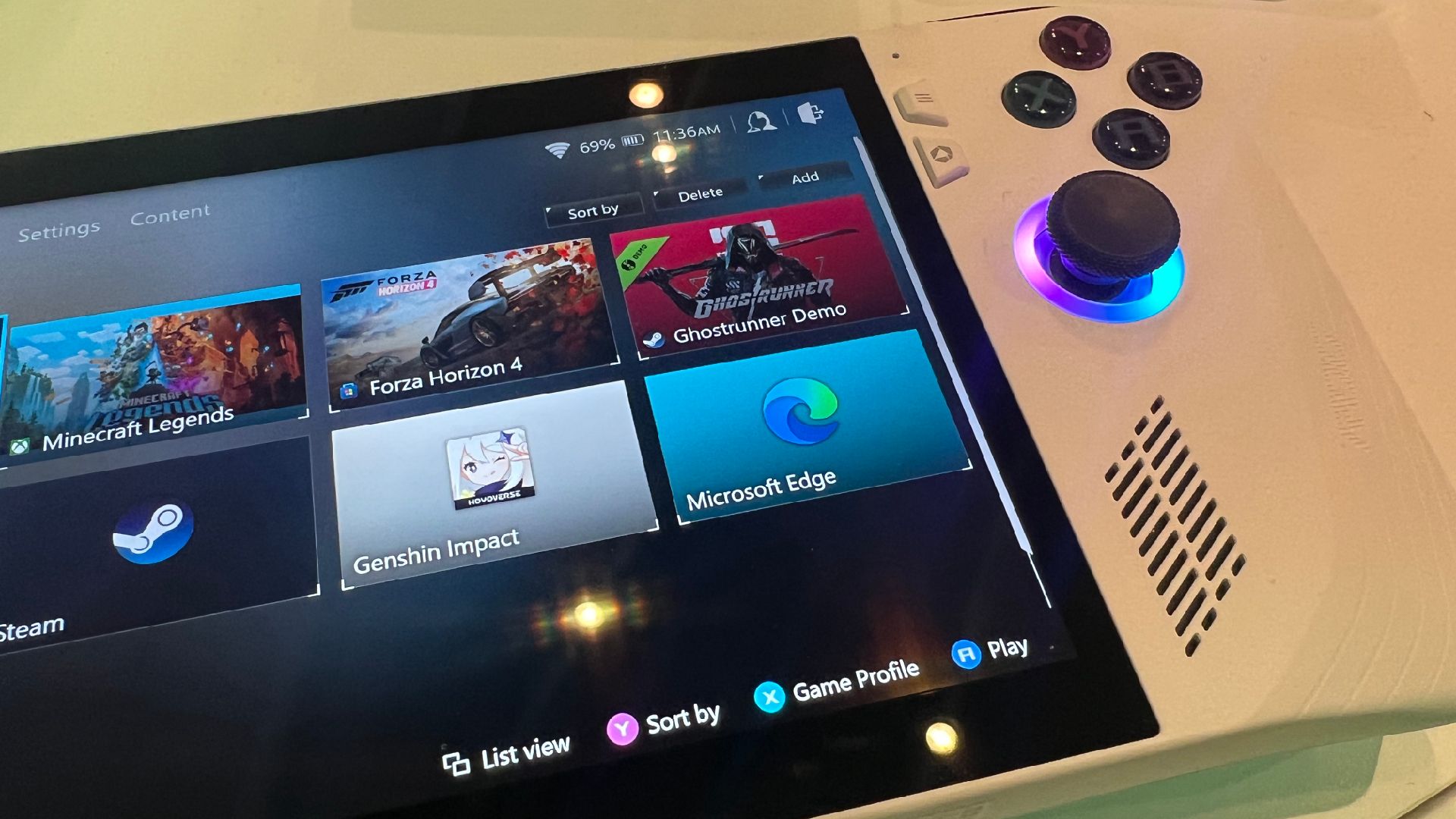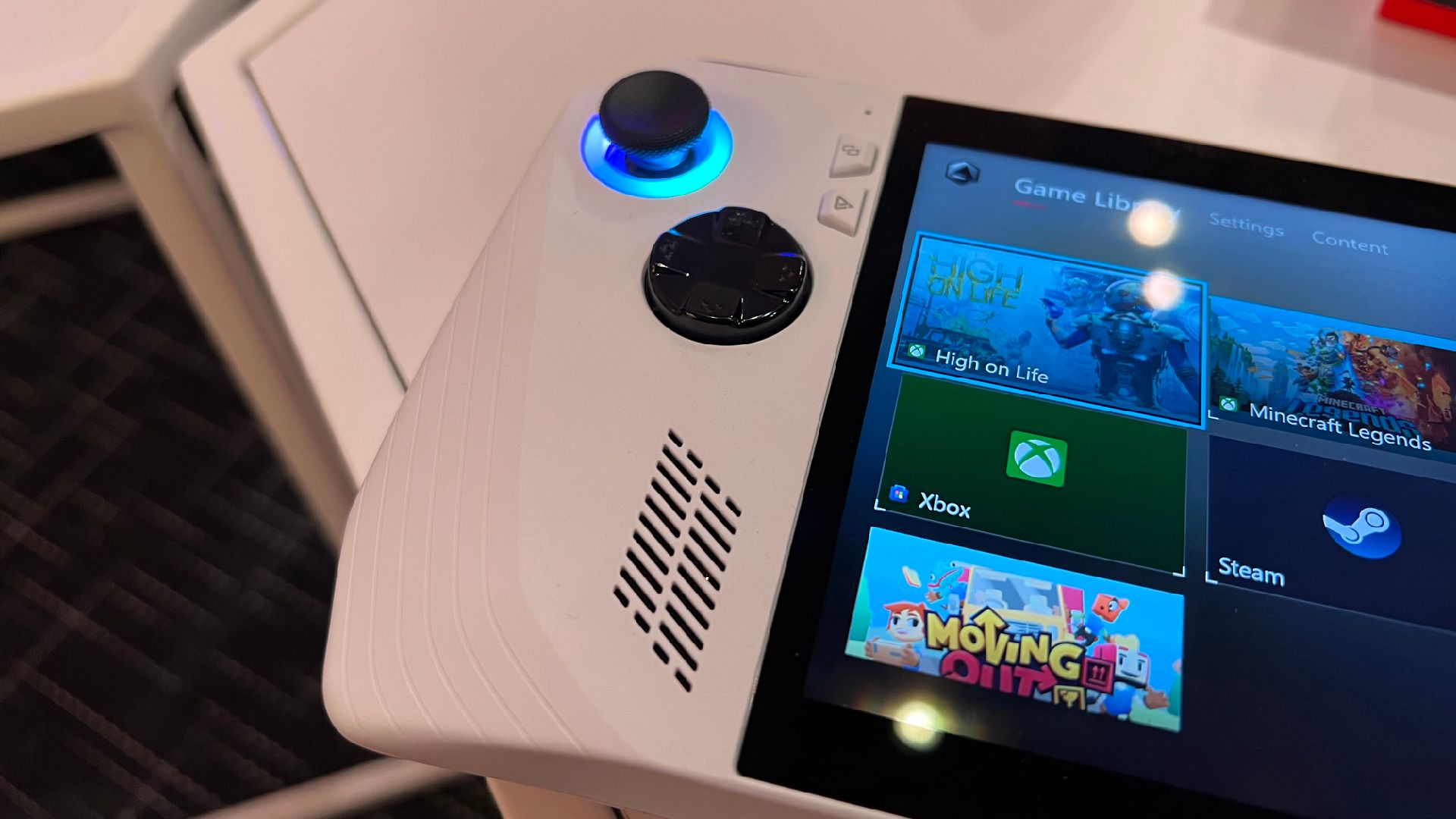On April Fools Day, Asus announced the new Asus ROG Ally handheld gaming PC. Coincidentally, April Fools Day also happens to be the day Asus was founded as a company–a fact that Asus’s Vice President of Gaming told us with a cheerful smile at a recent preview event. While the PC gaming giant is no stranger to releasing great and innovative gaming tech and peripherals, the launch of the ROG Ally feels like an especially momentous occasion for the company.
The handheld PC gaming space isn't anything new. Smaller companies like AyaNeo and OneXPlayer have been at the forefront of this market for a few years, while big-time newcomers like Valve and now Asus have started to shake things up with their own offerings. What all these companies will say is that it is not easy to pack all the features, performance, and options that PC gamers are accustomed to inside a twelve-inch shell that can comfortably fit inside a backpack or even a handbag. These feats of engineering come at a price and, for the most part, have made these neat handheld devices inaccessible to most customers, while the Nintendo Switch thrived as the go-to mobile console for all.
However, last year Valve released the Steam Deck: a handheld gaming PC that compromised less on the PC gaming experience and didn’t cost well over a thousand dollars to obtain. Customers were enthusiastic about the product, and it lived up to many of its promises, offering a nearly base PS4 level of power but in a portable form factor. The Switch, the Steam Deck, and a handful of smaller companies have been working towards this expansion of the handheld PC market for a long time now, but in the background was Asus also working on their own entry in this space.
Asus says that the ROG Ally has been in development for over five years now. And while the Ally may look like a direct response to last year's Steam Deck launch, the reality of its origins is a bit more complicated. Asus representatives at our media event said that the company looked more toward the Nintendo Switch as an inspiration for the handheld device while also trying to fill a void in the mobile gaming space that neither a laptop nor a smartphone can accomplish. One is unwieldy for truly on-the-go play for a variety of reasons, and the other lacks the power to run the latest core AAA games simply based on its nature.
Enter the ROG Ally: a device that Asus is marketing as a truly no-compromises PC gaming experience in a handheld form factor. On paper, it's quite impressive. The ROG Ally sports a surprisingly bright 1080p IPS screen at 120hz and 500 nits using adaptive sync technology. On its topside, the device has a MicroSD slot that Asus claims should have nearly identical loading times to the product's internal SSD storage, and it also sports a nifty power button with a fingerprint scanner. Additionally, there is a slot to connect an external GPU, a USB Type-C port for charging, and a 3.5 mm headphone jack which covers all the bases we would expect this device to cover.
The amount of IO and connection options that the ROG Ally is sporting is impressive, but it was when the device was in our hands that it felt like something special. Right away, the ROG Ally wowed us with its unexpectedly feathery weight. At only 608 grams, the Ally stands out compared to the chunky and oftentimes unwieldy competitors it's up against, like the Steam Deck and OneXPlayer, which can be surprisingly tiring to hold when in the wrong orientation and for long periods of time. While our few hours with the ROG Ally weren’t enough to grasp how this device will slot into everyday use, it isn’t hard to imagine being comfortable with it either on the couch, in bed, or on a train ride for multiple hours. Asus certainly took the Switch’s strengths in portability and brought it right into the Ally’s design philosophy.
Once we got settled into holding the device, it was time to see it in action and set how the Ally’s 1080p screen translates to a 7-inch screen. Overall, the screen was a stunner, looking crisp at full HD and offering great color reproduction due to its 100% sRGB coverage. Admittedly, 1080p on a 7-inch display seems a bit overkill for this amount of screen real estate; however, the excellent color reproduction was a revelation when compared to the slightly washed-out colors that have plagued the handheld space. What's more, the inclusion of adaptive sync on the ROG Ally’s screen was a joy to experience when games like Forza Horizon 4 or Dying Light 2 had their frame rates fluctuate, but the whole experience stayed smooth and tear-free thanks to the technology.
As we settled into gaming on the ROG Ally, the device started to show us what it is really capable of. At this event, we played a few big-budget games like Ghostrunner, Minecraft Legends, Dying Light 2, Forza Horizon 4, and a few small-scale indies like Moving Out and Overcooked 2. While Moving Out and Overcooked 2 looked great and ran well on the Ally, it was the AAA blockbuster games that really drew us in. After all, part of the novelty of these devices is taking something like Elden Ring on the go.
When we first loaded up Dying Light 2, we were content to see the game running at respectable frames at full HD. We can't share performance benchmarks just yet, but for a 1080p handheld, the Ally was about where we would expect it to be, and we kept our expectations in check. However, as we tinkered with the Ally and discovered its suite of options in the system’s custom overlay, we noticed that the handheld was in its “Performance” mode with an option to switch to "Turbo" mode.
We then switched the device to “Turbo,” and right away, Dying Light 2's frame rate shot up considerably, with some dips that were hardly noticeable due to the screen’s adaptive sync technology. Suddenly, what was an acceptable experience by a handheld PC's standards jumped to being a downright impressive one. It was a similar story for Forza Horizon 4 and Ghostrunner, which ran buttery smooth at the Turbo setting but also ran remarkably well at the lower-powered “Performance” mode too.
“Overkill” was a word that regularly came to mind as our time with the ROG Ally continued. We were curious as to why Asus elected to use what is likely a more expensive 1080p screen at 120Hz when–by many accounts–users have found 720p 60fps to be more than serviceable for a handheld device and could cut costs. The answer was simple: Asus wanted no compromises.
The screen is bright so fans can see every detail even when they're outside, and the 120hz is there because it looks great, and users can have the option to limit the screen to 60hz or 30hz if they so desire. The decision to go for 1080p instead of 720p exists simply because there has to be a point when handheld devices shift to full HD in the mainstream, and this should be it.
Above all else, however, Asus wants to give players freedom and options and let them decide what to do with what the Ally offers. If the user wants to run a game at full HD and try to squeeze out every last frame at the expense of battery, they can do so. But they can also knock the screen’s resolution down to 720p and play at 60fps or lower for battery life or whatever reason they choose. That was one of the biggest takeaways from our preview: this is a device about having options and freedom.
Based on our time with the device, it's clear that the ROG Ally is slim, comfortable, and powerful, which also raised many questions about how this was all accomplished. This is when AMD reps at this event jumped in and revealed that what is under the hood is where the ROG Ally gets interesting. Internally, the ROG Ally sports a new AMD Z1 series APU which offers Zen 4 CPU architecture and RDNA 3 graphics. Essentially, the Ally sports the latest in AMD's CPU and GPU tech, falling more in line with the architecture inside both the PS5 and Xbox Series X than the PS4 or Xbox One.
The team says that this is the culmination of a lot of engineering and figuring out how to make an APU that is both powerful and efficient without making it burn up for the sake of power or weak for the sake of efficiency. We didn’t receive any exact details about how many cores and teraflops this APU has behind it, but the leap to Zen 4 and RDNA 3 already makes us feel more confident that this device is equipped to take on newer titles with fewer compromises as PC ports get more demanding. Where it falls in power scale compared to the PS5 and Xbox Series X|S will certainly be an interesting thing to discover.
While our overall first impressions of the ROG Ally are positive, there were some caveats and drawbacks to the device that became apparent the more we used it. On the software side, the Armoury Crate overlay felt unfinished and was sometimes a little clunky. It occasionally struggled to change settings during gameplay and was totally unresponsive in a few scenarios, sometimes requiring a full reboot. Moreover, Asus has had a tough time optimizing its Armoury Crate software for desktops, so it doesn't inspire a lot of confidence that the ROG Ally won't have its fair share of issues at launch.
Asus says that one of the biggest draws for the ROG Ally is how it can play every PC game without any limitations due to its choice of platform, and it is proud of that fact. As the VP of Gaming said when asked if there would be any sort of "ROG Verified" program for the device, "It's [using] Windows." Fans will be able to play any game they own without hoops to jump through, workarounds to tinker with, or anti-cheat software getting in their way right from the start, all thanks to Windows. While that is true, the ROG Ally might not be well suited for all games, mainly due to its lack of touchpads and quality-of-life features.
Valve has made strides in condensing the PC gaming experience into a handheld device, providing Steam Deck users with two touchpads mimicking a mouse and a whole slew of options to allow non-gamepad-optimized games to still run well on the device. Old school CRPGs from the 90s and early 2000s that never considered a controller–along with almost every RTS title–play well or at least have the opportunity to play well on the Steam Deck because of these features and how Valve lets the community run wild with their own accessibility solutions. The ROG Ally seems lacking in both of these departments right now, and it's hard to imagine enjoying either genre on this device in its current iteration.
Regardless, the Asus ROG Ally is still an exciting device that might give the Steam Deck and other handheld PC gaming competitors a run for their money. It likely won't dethrone the Steam Deck as the go-to PC handheld for consumers–the specs and feature set offered here indicate that this product won't come cheap--but it has a real opportunity to corner the market for enthusiasts that wanted more out of their Steam Deck but don't necessarily want to spend over a thousand dollars to get something better. That is assuming pricing stays competitive.
From our time with the ROG Ally, we liked what we saw and feel like this may be as future-proof as a device of this caliber can be in 2023. It has the power, the form factor, and a growing set of features and software that can provide a truly premium handheld PC gaming experience with fewer compromises. How this device actually slots into the daily lives of gamers and if its "open platform" Windows-based approach to the handheld market is better than the walled-garden approach of its competitors remains to be seen, but so far, the ROG Ally seems like it will be a winner.
The Asus ROG Ally launches May 11, 2023.

